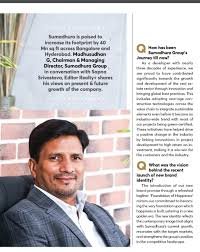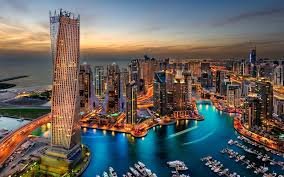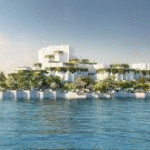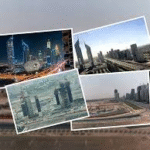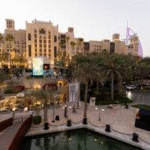Now Reading: ESG Strategy: Powerful Influence on UAE Real Estate Development
-
01
ESG Strategy: Powerful Influence on UAE Real Estate Development
ESG Strategy: Powerful Influence on UAE Real Estate Development

Table of Contents
The concept of Environmental, Social, and Governance (ESG) is rapidly moving from a niche concern to a central tenet of real estate development in the UAE. Driven by ambitious national sustainability agendas, increasing investor demand for responsible assets, and a growing awareness among consumers, ESG factors are fundamentally reshaping how properties are designed, constructed, operated, and valued across the Emirates.
The UAE’s Proactive Stance on Sustainability

The UAE government has demonstrated a strong commitment to sustainability, which directly influences the real estate sector. Key national strategies and initiatives include:
- UAE Net Zero by 2050 Strategic Initiative: This ambitious pledge makes the UAE the first country in the Middle East to commit to net-zero emissions, placing immense responsibility on energy-intensive sectors like real estate. This pushes for significant reductions in carbon footprint across new and existing buildings.
- Dubai Clean Energy Strategy 2050: Aims for Dubai to have the lowest carbon footprint in the world.
- Abu Dhabi Vision 2030 and Estidama Pearl Rating System: Estidama is a mandatory green building rating system in Abu Dhabi, promoting sustainable design, construction, and operation, with all new buildings required to achieve at least a “1 Pearl” rating.
- Dubai Green Building Regulations (Al Sa’fat): These regulations set strict guidelines for new developments in Dubai, focusing on energy efficiency, water conservation, material selection, and indoor environmental quality.
- “Make it in the Emirates” and Industrial Transformation: Government initiatives promote the adoption of advanced, sustainable technologies in local manufacturing and construction, fostering greener supply chains for building materials.
These top-down mandates create a compelling environment for developers to embed ESG principles into their core strategies.
How ESG is Influencing Real Estate Development
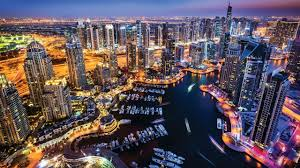
The influence of ESG is multifaceted, impacting every stage of a property’s lifecycle:
1. Environmental (E): Sustainable Design and Construction
The “E” in ESG is perhaps the most visible in UAE real estate, driving innovation in eco-friendly building practices:
- Energy Efficiency: New buildings are designed with advanced insulation, high-performance glazing, LED lighting, and smart building management systems (BMS) to significantly reduce energy consumption. Developers are integrating AI-driven climate control systems that learn occupant behaviors and adjust lighting and HVAC dynamically, cutting unnecessary energy use.
- Renewable Energy Integration: Solar panels are increasingly incorporated into designs, generating clean electricity. Projects like The Sustainable City in Dubai are pioneering fully solar-powered amenities and residences.
- Water Conservation: Given the UAE’s arid climate, water efficiency is paramount. Developments feature greywater recycling systems, low-flow fixtures, smart irrigation, and drought-resistant landscaping to minimize water usage.
- Sustainable Materials: There’s a growing emphasis on using locally sourced, recycled, and low-carbon building materials. Developers are exploring modular construction and prefabrication to reduce construction waste.
- Green Building Certifications: Developers are actively seeking international certifications like LEED (Leadership in Energy and Environmental Design) and BREEAM, alongside local ones like Estidama and Al Sa’fat, to validate their sustainability credentials. These certifications often lead to lower operating costs, higher rental incomes, and better financing opportunities.
- Emissions Reduction: The real estate sector is actively working to reduce its carbon footprint, with targets like the UAE’s commitment to reducing building sector-related emissions by 79% by 2035 from a 2019 baseline.
2. Social (S): Enhancing Community and Well-being
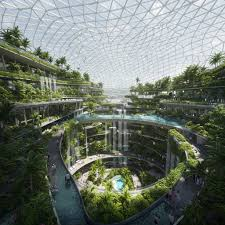
The “S” in ESG focuses on the impact of developments on people and communities:
- Health and Well-being: Projects are designed to improve indoor air quality, maximize natural light, and incorporate green spaces, promoting physical and mental health. Examples include wellness-focused communities like Haven by Aldar Properties.
- Community Integration: New developments prioritize pedestrian and cycling paths, public transport links, and ample green spaces (parks, gardens) to foster social interaction, encourage active lifestyles, and reduce reliance on cars. The rise of master-planned, self-sufficient communities with integrated amenities is a clear manifestation of this.
- Affordability and Inclusivity: While luxury developments continue to thrive, there’s a growing focus on creating inclusive communities that cater to diverse income levels, ensuring social equity.
- Worker Welfare: Ethical practices in construction, including fair labor conditions and safe working environments, are increasingly emphasized, aligning with global social responsibility standards.
3. Governance (G): Transparency and Responsible Management
“G” factors ensure ethical practices, transparency, and accountability in real estate operations:
- Transparent ESG Reporting: Developers are increasingly publishing annual sustainability reports, aligned with international standards, detailing their environmental impact, social contributions, and governance practices. This builds trust with investors and stakeholders.
- Ethical Sourcing: Ensuring that materials are sourced responsibly and supply chains adhere to ethical labor and environmental standards.
- Corporate Governance: Strong governance structures within real estate firms and projects ensure that ESG commitments are not just performative but are integrated into decision-making processes.
- Risk Management: ESG considerations are influencing risk assessment. For instance, developers are factoring in physical climate risks like flooding and extreme weather events into design and location choices, impacting property valuations and insurance premiums.
Investor Demand and Financial Incentives
The shift towards ESG is also significantly driven by market forces:
- Investor Preference: Global investors, including sovereign wealth funds and institutional investors, are increasingly prioritizing ESG-compliant assets. Sustainable properties are becoming more attractive, potentially commanding higher occupancy rates, rental premiums, and resale values.
- Green Financing: The UAE is seeing the rise of green bonds and sustainability-linked loans, which offer favorable financing terms for projects that meet specific ESG criteria. Aldar Properties, for example, has secured sustainability-linked loans tied to its ESG targets.
- REITs: The launch of sustainable real estate investment trusts (REITs), like Emirates NBD Asset Management’s sustainable REIT, provides avenues for investors to directly invest in green properties.
Conclusion
ESG strategy is fundamentally reshaping the UAE’s real estate development landscape. From government mandates and green building regulations to evolving investor demands and consumer preferences, the industry is witnessing a profound transformation towards a more sustainable and responsible future. This commitment to ESG is not just about environmental stewardship; it’s a strategic move to future-proof the real estate sector, enhance its competitiveness, attract global capital, and ultimately create healthier, more resilient, and livable communities across the Emirates. The UAE is indeed setting a compelling global example of how rapid urban growth can be harmonized with comprehensive sustainability goals.
WATCH MORE: https://landsterling.com/realpulse/importance-and-impact-of-esg-in-real-estate-investment/
READ MORE: AI and Robotics: Powerful Transformation in UAE Industries



